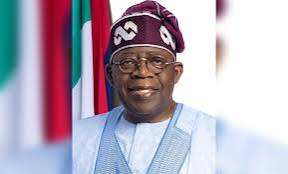Infrastructure Growth and Recovery Outlook… Can infrastructure projects drive emerging markets’ Covid-19 recoveries?

– Despite the economic slowdown, infrastructure projects increased by 5.5% in 2020
– Infrastructure development is likely to be a key growth driver this year
– Green or sustainable projects are those most likely to increase in demand
– Asia is leading the way for emerging market infrastructure development
By Oxford Business Group
Many emerging markets are turning towards infrastructure projects to stimulate the economic recovery from the coranvirus pandemic, with a particular focus on green and sustainable developments.
Despite the broader downturn last year – which the IMF says resulted in the global economy contracting by 3.5% – the number of newly announced infrastructure projects actually increased by 5%, according to analysis from global financial data company Refinitiv. In total, 2550 new projects were announced in 2020 with a combined value of $739bn.
Of these, 56% were classified as sustainable, primarily made up of renewable energy projects in the solar, wind, biomass and hydroelectric segments. This was the fourth consecutive year in which the number of sustainable projects increased, rising from 808 in 2016 to 1437 in 2020.
A majority of infrastructure projects announced last year were in the power sector (63.7%), followed by transportation (11.4%), leisure and property (7.9%), and oil and gas (5.6%).
While the majority of these projects were in Western Europe (604) and North America (419), 297 were announced in Latin America and 257 in South-east Asia.
In terms of the latter, Vietnam connected more than 9 GW of solar power to the national system over the course of 2020 – increasing the country’s overall solar capacity eight-fold relative to 2019 levels. Meanwhile, in June the government approved a further 7 GW in wind power projects.
Sustainable development to drive growth
Looking ahead, growth in the volume of infrastructure projects is expected to continue into 2021, as restrictions ease and governments look to stimulate their economies.
An example of a potential infrastructure-led recovery is US President Joe Biden’s proposed multibillion-dollar “Build Back Better” plan, which aims to repair much of the country’s physical infrastructure – such as roads, bridges and airports – while also investing significant amounts in new broadband internet developments and green energy projects.
From a global perspective, green developments are once again expected to be one of the major drivers of infrastructure growth, spurred on by growing demand for renewable energy and governmental efforts to meet carbon reduction targets.
As OBG has outlined, the value of green bonds defied the Covid-19 economic slowdown to reach a record high of $269.5bn last year, according to the Climate Bonds Initiative, a figure that some suggest could be as high as $400-500bn this year.
Global examples of major sustainability-minded infrastructure strategies include the EU’s €1trn European Green Deal plan, which envisages massive investment in sustainable projects to ensure the bloc is climate neutral by 2050, and China’s Belt and Road Initiative, which is placing greater emphasis on sustainable infrastructure in the wake of Covid-19 through its Green Silk Road plan.
Elsewhere, significant investment is also expected in telecommunications infrastructure following the rapid uptake of digital services throughout the pandemic.
As global demand patterns shift, renewed investment is necessary to bridge the ongoing infrastructure gap. Despite an increase in projects last year, the world has long been underinvesting in infrastructure.
According to the Global Infrastructure Hub, a G20 initiative, the world is facing a $400bn gap in infrastructure investment this year, a figure that could cumulatively grow to $15trn by 2040 if current rates of spending continue.
Asia leading the way
Emerging markets are expected to be a key engine of growth for global infrastructure investment in the years ahead.
According to projections from insurance company Swiss Re, of the $66bn in infrastructure spending expected between 2021 and 2040, some $43bn is to come from emerging markets. Much of this will be driven by emerging Asia (including China), which will account for $35bn in infrastructure spending over the period.
The region is also expected to see a spike in infrastructure projects in the short term.
After Covid-19 prompted an 8.5% contraction in the South and South-east Asian construction market in 2020, UK data analytics firm GlobalData has projected the sector will experience a significant rebound in 2021.
One country looking towards infrastructure as a major economic growth driver is the Philippines. While many projects under the flagship “Build, Build, Build” plan were delayed last year, the government has made attempts to revitalise them in 2021.
In January it was announced that a Chinese consortium would finance the $940m Subic-Clark cargo railway project, while in March the Department of Public Works and Highways said it had hired an additional 1000 engineers to fast-track a series of “Build, Build, Build” projects.
Infrastructure development across the region is also expected to be supported by international institutions. In March the Green Climate Fund announced that it would allocate $300m to the Asian Development Bank-managed green recovery programme, which will provide technical assistance and concessional loans to 20 green energy projects across South-east Asia.





